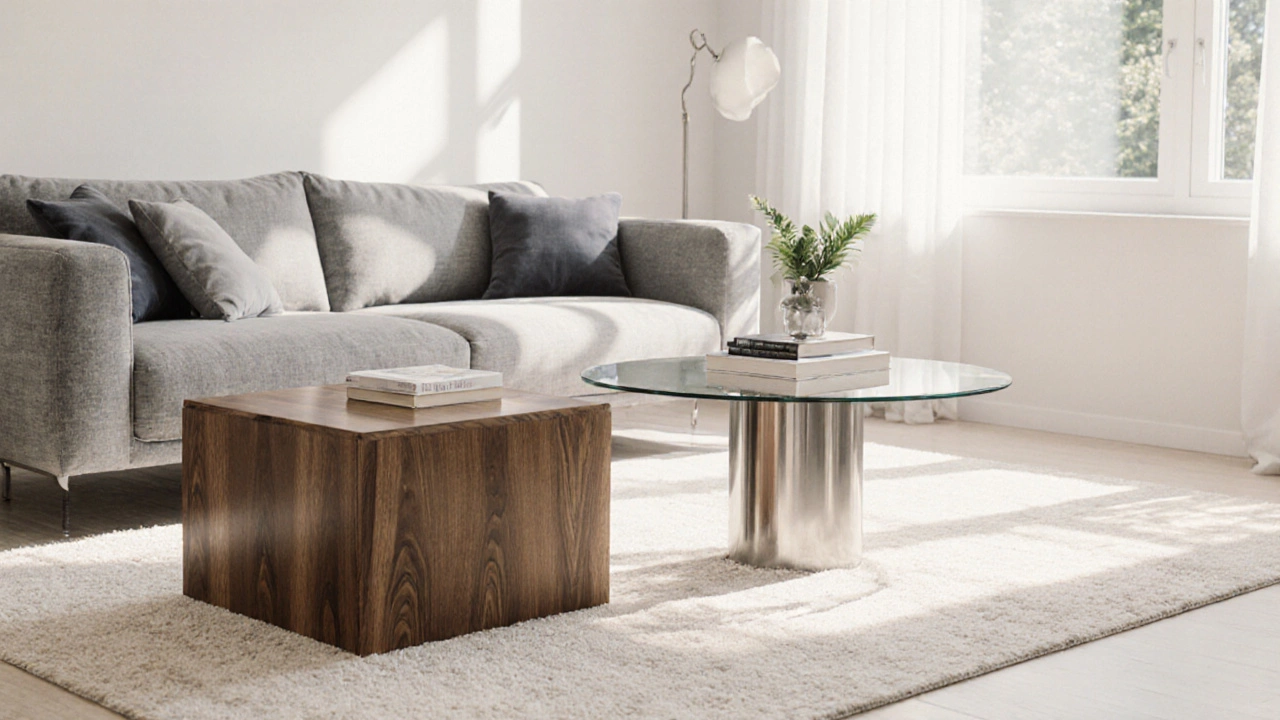Coffee Table Shape: Picking the Right Form for Your Space
When working with coffee table shape, the silhouette of a coffee table that fits your room’s flow and style. Also known as table silhouette, it determines how people move around, what accessories sit on it, and how it blends with other furniture. A well‑chosen shape can make a cramped lounge feel airy or give a grand room a touch of balance. Below we break down the most common shapes and why they matter.
First, let’s list the basics. Round coffee tables soften sharp angles and encourage conversation because everyone can see each other without a corner in the way. Square and rectangular tables maximize surface area for books, trays, and décor, while still keeping a low profile. Oval offers a hybrid feel – the elegance of a curve with a bit more usable edge. Each shape carries attributes like diameter or length, height, and proportion to the sofa. A good rule of thumb: the table’s width should be about two‑thirds the sofa’s seat depth, and the height should sit roughly 1‑2 inches below the sofa cushions.
Now, why does shape matter for living room layout, the arrangement of furniture and traffic flow in a room? A round table creates a 360‑degree walkway, perfect for open‑plan spaces where you want easy movement. A rectangular table lines up with a sofa‑and‑chair set, defining a clear “conversation zone.” In tiny apartments, a square table can tuck into a corner without blocking paths. Semantic triple: coffee table shape influences living room layout; living room layout affects traffic flow; traffic flow determines comfort.
Space‑Saving Considerations
When floor space is at a premium, space‑saving furniture, pieces designed to maximize utility in small areas becomes the star. A low‑profile round table can sit on a rug without eating up corners, while a nesting set of rectangular tables lets you pull out extra surface only when needed. Choose a shape that matches the room’s dimensions – a small round table works wonders in a studio, whereas a long rectangular piece can span a larger sectional without looking lost.
Beyond function, shape drives interior design, the overall aesthetic and style language of a space. A sleek, rectangular table in a modern bamboo finish echoes minimalist vibes, while a low‑stacked round table in a tiger‑print bamboo veneer adds a bold focal point. Pairing shape with material lets you play with contrast – think a round metal frame on a wooden top for industrial chic, or a square teak slab for a warm, natural feel. The right silhouette can either reinforce the room’s theme or become an unexpected statement.
Material choice ties directly into sustainability, a core value of Bamboo Tiger Furniture Store. Bamboo coffee tables are lightweight yet sturdy, and they pair well with any shape. A round bamboo table feels organic in a boho setting, while a rectangular bamboo piece supports a clean, Scandinavian look. Because bamboo grows fast, you get a greener product without sacrificing durability. When you match shape with eco‑friendly material, you get a piece that looks good, works well, and respects the planet.
Practical tips for choosing the right shape: 1) Measure the space between your sofa and other furniture; leave at least 18‑24 inches for traffic. 2) Consider the primary use – if you host board games, a square or rectangular table offers more surface. 3) Look at the room’s geometry; a room with many straight lines benefits from a round table to break the monotony. 4) Think about accessories – vases, books, or a laptop fit differently on each shape. 5) Test the vibe – place a cardboard cutout of the shape on the floor and walk around; if it feels right, you’ve found a match.
All these factors – size, material, room flow, and style – intersect to guide your decision. Below you’ll find articles that dive deeper into each aspect: from pros and cons of having a coffee table at all, to alternatives for tiny apartments, and even how shape impacts visual balance. Keep reading to get the detailed guidance you need to pick a coffee table shape that works perfectly for your home.
Square vs Circle Coffee Table: Which Shape Fits Your Living Room?
Discover how to choose between a square and a round coffee table. Learn to measure space, match style, pick materials, and avoid common pitfalls for a perfect living‑room fit.
View more